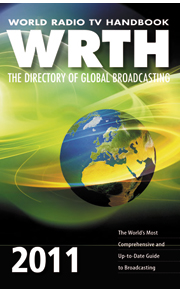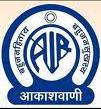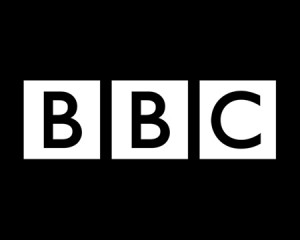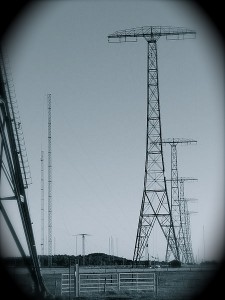 The World Radio TV Handbook (WRTH) has posted mid-season A11 schedules for download on their website. Click here for the download.
The World Radio TV Handbook (WRTH) has posted mid-season A11 schedules for download on their website. Click here for the download.
If you are not familiar with WRTH, please click here to read more.

 The World Radio TV Handbook (WRTH) has posted mid-season A11 schedules for download on their website. Click here for the download.
The World Radio TV Handbook (WRTH) has posted mid-season A11 schedules for download on their website. Click here for the download.
If you are not familiar with WRTH, please click here to read more.
 A lesson here is when you pull out of shortwave radio broadcasts you lose very large swatches of listeners–especially when many in your audience lack access to the internet.
A lesson here is when you pull out of shortwave radio broadcasts you lose very large swatches of listeners–especially when many in your audience lack access to the internet.
(Source: Journalism.co.uk)
The BBC World Service’s global audience has dropped by 14 million in the past year, according to the broadcaster.
Overall audience for the year has been estimated at 166 million, down from 180 million last year.
However, it claims online the World Service’s audience has risen by 40 per cent in the past 12 months.
In the BBC World Service annual report, published today, the broadcaster blamed the overall fall on the numerous service closures and changes which were implemented following cuts to its funding.
 I found this BBC profile on Somalia quite indicative of many countries in Africa. In light of cuts that the BBC World Service has been facing, this short article, about Somalia’s fragmented media landscape, admits that shortwave plays a vital roll in domestic news.
I found this BBC profile on Somalia quite indicative of many countries in Africa. In light of cuts that the BBC World Service has been facing, this short article, about Somalia’s fragmented media landscape, admits that shortwave plays a vital roll in domestic news.
The TV and press sectors are weak and radio is the dominant medium. There are around 20 radio stations, but no national, domestic broadcaster. Many listeners tune to Somali-language media based abroad, in particular the BBC Somali service. The latter is available on shortwave, and via FM relays in Mogadishu (91.1), the Somaliland capital Hargeisa (89.0), and elsewhere.
They go on to say:
The Somali diaspora – in the West, the Gulf states and elsewhere – sustains a rich internet presence. But domestic web access is hampered by practicalities such as limited access to mains electricity. There were 102,000 internet users by September 2009 (Internetworldstats). In secessionist Somaliland and Puntland the authorities maintain a tight hold on broadcasting.
Shortwave listeners in Somalia, one should note, also listen to the likes of the Voice of America, Radio Netherlands Worldwide, Radio France International and many others. Most of whom are facing cuts right now as national budgets are being tightened in the economic recession. To those living in Somalia, where the media is fragmented and untrustworthy, shortwave radio represents a lifeline of information.
As we mentioned in this previous post, please consider speaking up on behalf of those without a voice. Let international broadcasters and their governing bodies know how crucial shortwave services are into impoverished regions of the world.
 As we’ve mentioned before, it appears AIR (All India Radio) may soon be a leader in digital radio in all forms, including shortwave. This, from the Deccan Herald:
As we’ve mentioned before, it appears AIR (All India Radio) may soon be a leader in digital radio in all forms, including shortwave. This, from the Deccan Herald:
The government plans to launch a 24-hour news broadcast channel of All India Radio (AIR) as part of its sweeping modernisation programme in the next five years.
AIR will also witness a complete digitisation of its studios, transmissions and connectivity across the country by 2017 according to plans by Ministry of Information and Broadcasting. With a view to improving efficiency and broadcast quality, the government will replace old and obsolete equipment besides enhancing AIR’s infrastructure by refurbishing its studios.
[…]While the reach of the national channel is proposed to be extended to the whole of the country, the external services of the AIR will also be strengthened through digitalisation of shortwave transmitters.
Read the full article at the Deccan Herald. Thanks to @kaedotcom (Kim Elliot) for the tip!
 BBC journalists have announced that they will strike next week in protest of the mandatory lay-offs/redundancies which will greatly reduce the BBC World Service staff.
BBC journalists have announced that they will strike next week in protest of the mandatory lay-offs/redundancies which will greatly reduce the BBC World Service staff.
(Source: Journalism.co.uk)
Journalists at the BBC have announced they will take strike action next week in a dispute over compulsory redundancies.
Members of the National Union of Journalists voted in favour of strike action earlier this week, with 72 per cent of those who voted saying they would be prepared to strike.
According to the NUJ, more than 100 people are at risk of compulsory redundancy at the BBC World Service.
Union members are also said to be at risk in divisions including BBC Monitoring, BBC Scotland and potentially at BBC Wales, BBC 4, BBC Sport and TV Current Affairs.
Today the union confirmed a one-day walk out will take place on 15 July.
Read full article at Journalism.co.uk.
 A friend recently sent me this archive site of a BBC documentary from 2005 that tracks the Lincolnshire Poacher and other numbers stations.
A friend recently sent me this archive site of a BBC documentary from 2005 that tracks the Lincolnshire Poacher and other numbers stations.
If you’re unfamiliar with numbers stations check out our previous post on the subject–and be sure to listen to David Goren’s production, “Seis Siete Tres Siete Cero“.
Along with pirate radio stations, I think numbers stations are one of the most sonically interesting catches we find while cruising the ether. When I happen upon one, no matter what language, I end up listening to them for way too long. Indeed, I do the same with WWV, but that’s a different story.
Want to hear the Lincolnshire Poacher live? It can be a bit tricky, but learn where they broadcast by visiting this page and set the memories on your radio to scan those frequencies.
Happy hunting!
Lately, I’ve been listening to a plethora of shortwave broadcasts as I’m about to review several new radios. I’ve noted so many great interval signals that are still in use. The following is a reprise of a previous post–from over two years ago–about interval signals. If you’ve never heard of interval signals, this post offers an introduction.
What are interval or tuning signals? Often the most recognized sounds in the shortwave bands are the repetitive tones and musical interludes heard between broadcasts, known as interval signals. These are simply characteristic musical phrases that broadcasters play between programs. In fact, for me, nothing is more nostalgic than to hear the interval signals of some of my favorite broadcasters from my youth. Here are a few classic examples of interval signals:
Interval signals usually include station and program identification, and are often in multiple languages. Not only do they help identify the station, but in the days of crowded international broadcast bands, interval signals helped listeners tune in and adjust their radios prior to program commencement.
Broadcasters have been using interval signals since the 1920s, but there has been a decline with the advent of digitally tuned radios which, unlike analog tuners, take the guesswork out of tuning into a specific frequency.
So, in this digital age, are interval signals still around? Sure. Many broadcasters believe an interval signal is still the best way to announce station and program identification; one might say their interval signals have become audio “logos.”
Here is an audio clip I recorded on April 23, 2009, of the interval signal for the new Happy Station Show: [Click here to listen]
For comparison, listen to this audio clip of the Happy Station Show from Jan 20, 1980, when it was a part of Radio Netherlands: [Click here to listen]
Listening for Signals
Where can you hear interval signals today? Fortunately, they can be heard all over the shortwave broadcast spectrum. The best times to hear interval signals are on the top of the hour and sometimes at the half or quarter hour.
Another great place to hear interval signals are on the web. There are several interval signal databases where you can listen to a wide variety of interval signals. One of my favorites is the Interval Signal Database. This site is in German and English and is well categorized and searchable. In fact, Bernhard, the webmaster of the Interval Signal Database, gave me permission to publish several of his audio clips above. [Danke, Bernhard!]
Here is a list of interval signal websites:
Since he’s somewhat of an interval signal guru, I asked Bernhard for his favorite interval signal recording. He pointed out this one from the Cold War era: it is a recording of a special low-power (1kW) training station of the Austrian military. Bernhard informed me that in times of crisis, this station was to serve as a back-up for the Austrian Radio ORF.
Leave a comment: What is your favorite interval signal, and why?
• • • • • • • • • • • • • • • • • • • • • •
On a side note–Bernhard also pointed out one of his favorite non-interval signal recordings. In this recording, the news reader started the German language news by reading the frequencies, then noticed that the studio door was open. You can clearly hear her getting up to close the door in the recording.